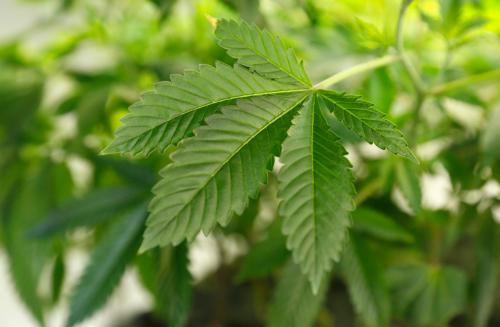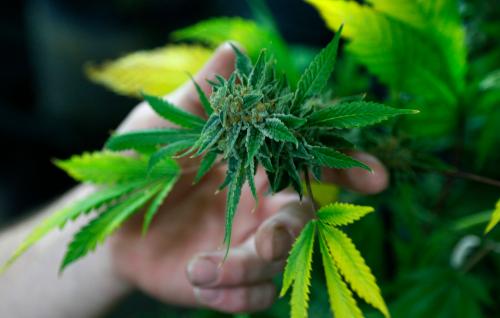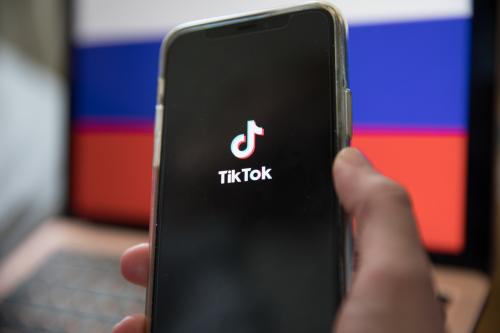This week, Congress agreed to the final version of the 2018 Farm Bill, and President Trump is expected to sign the legislation within days. But this is not your typical farm bill. While it provides important agricultural and nutritional policy extensions for five years, the most interesting changes involve the cannabis plant. Typically, cannabis is not part of the conversation around farm subsidies, nutritional assistance, and crop insurance. Yet, this year, Senate Majority Leader Mitch McConnell’s strong support of and leadership on the issue of hemp has thrust the cannabis plant into the limelight.
For a little bit of background, hemp is defined in the legislation as the cannabis plant (yes, the same one that produces marijuana) with one key difference: hemp cannot contain more than 0.3 percent of THC (the compound in the plant most commonly associated with getting a person high). In short, hemp can’t get you high. For decades, federal law did not differentiate hemp from other cannabis plants, all of which were effectively made illegal in 1937 under the Marihuana Tax Act and formally made illegal in 1970 under the Controlled Substances Act—the latter banned cannabis of any kind.
It’s true that hemp policy in the United States has been drastically transformed by this new legislation. However, there remain some misconceptions about what, exactly, this policy change does.
Hemp is legal in the United States—with serious restrictions
The allowed pilot programs to study hemp (often labeled “industrial hemp”) that were approved by both the U.S. Department of Agriculture (USDA) and state departments of agriculture. This allowed small-scale expansion of hemp cultivation for limited purposes. The 2018 Farm Bill is more expansive. It allows hemp cultivation broadly, not simply pilot programs for studying market interest in hemp-derived products. It explicitly allows the transfer of hemp-derived products across state lines for commercial or other purposes. It also puts no restrictions on the sale, transport, or possession of hemp-derived products, so long as those items are produced in a manner consistent with the law.
However, the new Farm Bill does not create a completely free system in which individuals or businesses can grow hemp whenever and wherever they want. There are numerous restrictions.
First, as noted above, hemp cannot contain more than 0.3 percent THC, per section 10113 of the Farm Bill. Any cannabis plant that contains more than 0.3 percent THC would be considered non-hemp cannabis—or marijuana—under federal law and would thus face no legal protection under this new legislation.
Second, there will be significant, shared state-federal regulatory power over hemp cultivation and production. Under section 10113 of the Farm Bill, state departments of agriculture must consult with the state’s governor and chief law enforcement officer to devise a plan that must be submitted to the Secretary of USDA. A state’s plan to license and regulate hemp can only commence once the Secretary of USDA approves that state’s plan. In states opting not to devise a hemp regulatory program, USDA will construct a regulatory program under which hemp cultivators in those states must apply for licenses and comply with a federally-run program. This system of shared regulatory programming is similar to options states had in other policy areas such as health insurance marketplaces under ACA, or workplace safety plans under OSHA—both of which had federally-run systems for states opting not to set up their own systems.
Third, the law outlines actions that are considered violations of federal hemp law (including such activities as cultivating without a license or producing cannabis with more than 0.3 percent THC). The law details possible punishments for such violations, pathways for violators to become compliant, and even which activities qualify as felonies under the law, such as repeated offenses.
Ultimately, the Farm Bill legalizes hemp, but it doesn’t create a system in which people can grow it as freely as they can grow tomatoes or basil. This will be a highly regulated crop in the United States for both personal and industrial production.
Hemp research remains important
One of the goals of the 2014 Farm Bill was to generate and protect research into hemp. The 2018 Farm Bill continues this effort. Section 7605 re-extends the protections for hemp research and the conditions under which such research can and should be conducted. Further, section 7501 of the Farm Bill extends hemp research by including hemp under the Critical Agricultural Materials Act. This provision recognizes the importance, diversity, and opportunity of the plant and the products that can be derived from it, but also recognizes an important point: there is a still a lot to learn about hemp and its products from commercial and market perspectives. Yes, farmers—legal and illegal—already know a lot about this plant, but more can and should be done to make sure that hemp as an agricultural commodity remains stable.
Hemp farmers are treated like other farmers
Under the 2018 Farm Bill hemp is treated like other agricultural commodities in many ways. This is an important point. While there are provisions that heavily regulate hemp, and concerns exist among law enforcement—rightly or wrongly—that cannabis plants used to derive marijuana will be comingled with hemp plants, this legislation makes hemp a mainstream crop. Several provisions of the Farm Bill include changes to existing provisions of agricultural law to include hemp. One of the most important provisions from the perspective of hemp farmers lies in section 11101. This section includes hemp farmers’ protections under the Federal Crop Insurance Act. This will assist farmers who, in the normal course of agricultural production, face crop termination (crop losses). As the climate changes and as farmers get used to growing this “new” product, these protections will be important.
Cannabidiol or CBD is made legal—under specific circumstances
One big myth that exists about the Farm Bill is that cannabidiol (CBD)—a non-intoxicating compound found in cannabis—is legalized. It is true that section 12619 of the Farm Bill removes hemp-derived products from its Schedule I status under the Controlled Substances Act, but the legislation does not legalize CBD generally. As I have noted elsewhere on this blog CBD generally remains a Schedule I substance under federal law. The Farm Bill—and an unrelated, recent action by the Department of Justice—creates exceptions to this Schedule I status in certain situations. The Farm Bill ensures that any cannabinoid—a set of chemical compounds found in the cannabis plant—that is derived from hemp will be legal, if and only if that hemp is produced in a manner consistent with the Farm Bill, associated federal regulations, association state regulations, and by a licensed grower. All other cannabinoids, produced in any other setting, remain a Schedule I substance under federal law and are thus illegal. (The one exception is pharmaceutical-grade CBD products that have been approved by FDA, which currently includes one drug: GW Pharmaceutical’s Epidiolex.)
There is one additional gray area of research moving forward. Under current law, any cannabis-based research conducted in the United States must use research-grade cannabis from the nation’s sole provider of the product: the Marijuana Program at the University of Mississippi School of Pharmacy’s National Center for Natural Products Research. That setup exists because of cannabis’s Schedule I status.[1] However, if hemp-derived CBD is no longer listed on the federal schedules, it will raise questions among medical and scientific researchers studying CBD products and their effects, as to whether they are required to get their products from Mississippi. This will likely require additional guidance from FDA (the Food and Drug Administration who oversees drug trials), DEA (the Drug Enforcement Administration who mandates that research-grade cannabis be sourced from Mississippi), and NIDA (National Institute on Drug Abuse who administers the contract to cultivate research-grade cannabis) to help ensure researchers do not inadvertently operate out of compliance.
State-legal cannabis programs are still illegal under federal law
The Farm Bill has no effect on state-legal cannabis programs. Over the past 22 years, 33 states have legalized cannabis for medical purposes, and over the past six years, 10 states have legalized cannabis for adult use. Every one of those programs is illegal under federal law, with no exceptions, and the Farm Bill does nothing to change that. That said, many in the advocacy community hope that the reforms to hemp policy under the Farm Bill serve as a first step toward broader cannabis reform. (Although I would argue that a soon-to-be-sworn-in Democratic House majority alongside a president with a record of pro-cannabis reform rhetoric is the more likely foundation for broader cannabis reform.)
Even CBD products produced by state-legal, medical, or adult-use cannabis programs are illegal products under federal law, both within states and across state lines. This legal reality is an important distinction for consumer protection. There are numerous myths about the legality of CBD products and their availability. Under the 2018 Farm Bill, there will be more broadly available, legal, CBD products; however, this does not mean that all CBD products are legal moving forward. Knowing your producer and whether they are legal and legitimate will be an important part of consumer research in a post-2018 Farm Bill world.
Mitch McConnell, cannabis champion?
Many advocates applaud Leader McConnell for his stewardship of these hemp provisions into the Farm Bill and his leadership on the legislation overall. That assessment is accurate. Without Mr. McConnell’s efforts, the hemp provisions would never had found their way into the legislation initially. And although his position as Senate leader gave him tremendous institutional influence over the legislation, he went a step further by appointing himself to the conference committee that would bring the House and Senate together to agree on a final version.
McConnell understood much about this issue. First, he knows hemp doesn’t get you high and that the drug war debate that swept up hemp was politically motivated, rather than policy-oriented. Second, Kentucky—the leader’s home state—is one of the best places to cultivate hemp in the world, and pre-prohibition the state had a robust hemp sector. Third, the grassroots interest in this issue was growing in Kentucky, and McConnell knows that his role as Senate Majority Leader hangs in the balance in 2020, as does his Senate seat as he faces re-election that same year. McConnell emerges from the Farm Bill as a hemp hero, but advocates should be hesitant to label him a cannabis champion; Leader McConnell remains a staunch opponent of marijuana reform and his role in the Senate could be the roadblock of Democratic-passed legislation in the 116th Congress.
[1] Under the Controlled Substances Act, all controlled drugs fall under five schedules. Schedule I has the highest level of control, designated a substance as having no safe medical use and has a high risk of abuse or misuse. Schedule I substances are illegal under the law.










Commentary
The Farm Bill, hemp legalization and the status of CBD: An explainer
December 14, 2018